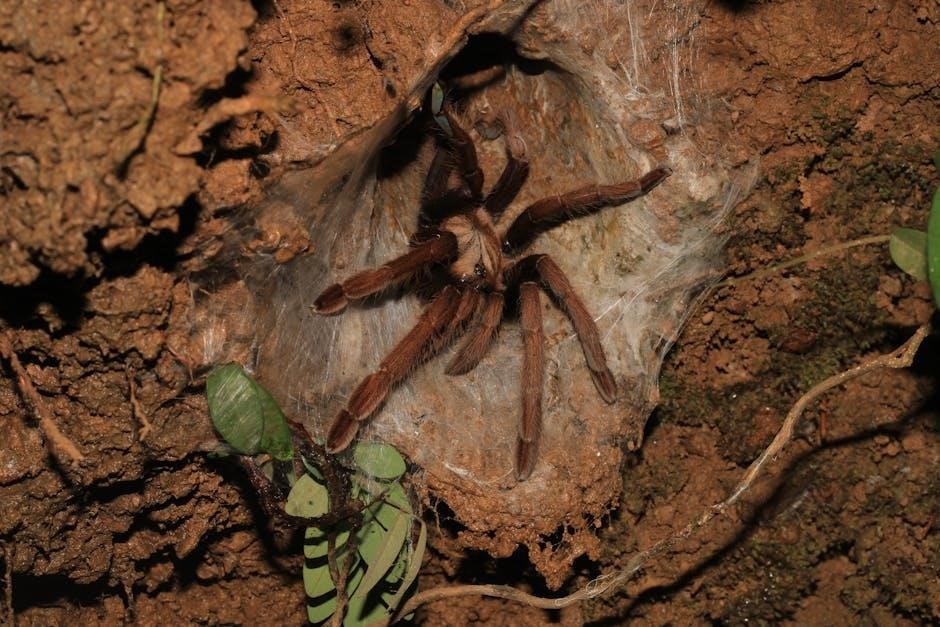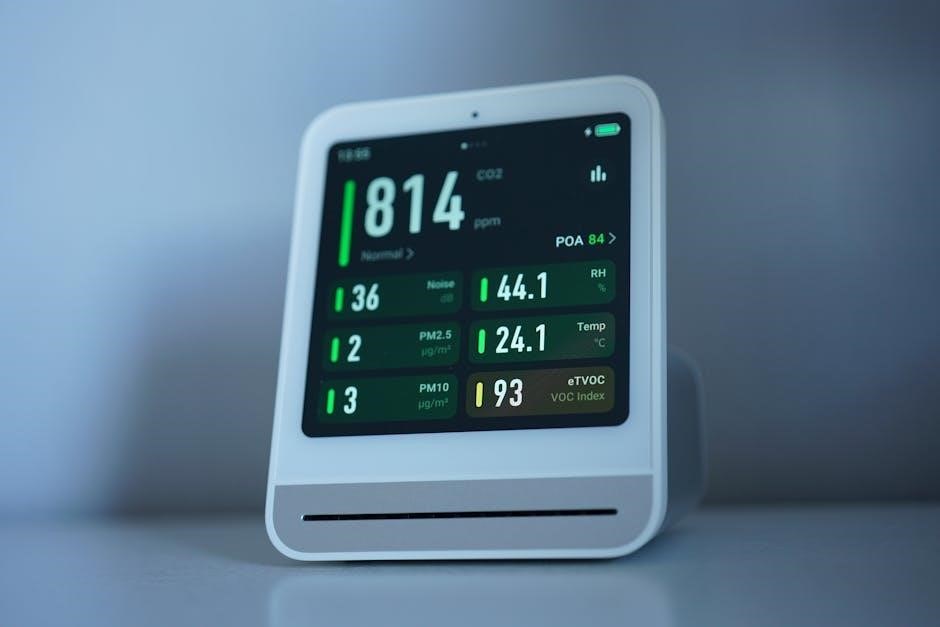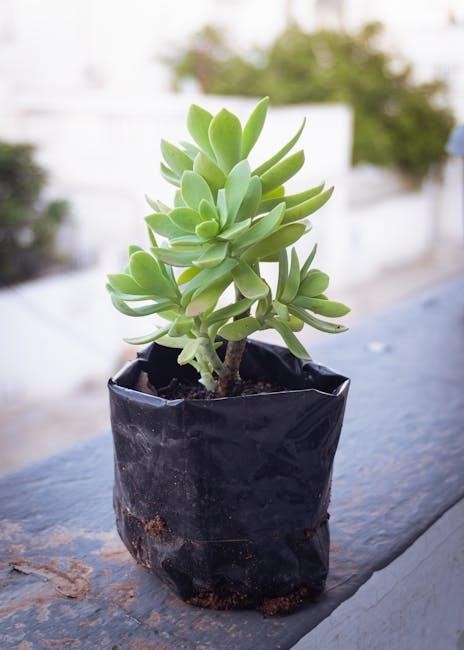The Leviton Humidity Sensor is a smart device designed to monitor and control humidity levels in your home․ It automatically detects excess moisture and activates ventilation fans to reduce condensation, improving indoor air quality and preventing mold growth․ With models like DHS05 and IPHS5, it offers reliable performance and seamless integration with home automation systems․
1․1 Overview of the Leviton Humidity Sensor
The Leviton Humidity Sensor is a cutting-edge device designed to monitor and regulate humidity levels in residential spaces․ It features advanced technology to detect excess moisture and automatically activate ventilation fans to maintain optimal indoor air quality․ Available in models like DHS05 and IPHS5, it offers precise control, adjustable sensitivity, and compatibility with smart home systems for enhanced automation․ Its compact design ensures seamless integration with Decora-style installations, making it a versatile solution for modern homes․
1․2 Importance of Humidity Control in Home Automation
Humidity control is essential in home automation as it prevents mold growth, reduces energy costs, and enhances comfort․ Excess moisture can damage walls and electronics, while low humidity can cause static electricity and discomfort․ The Leviton Humidity Sensor ensures balanced moisture levels, protecting your home and improving air quality, making it a crucial component in modern smart home systems․
Installation Instructions
Ensure power is off, use a voltage tester, and follow wiring diagrams for safe installation․ Avoid fire hazards by following Leviton’s guidelines․ Consult the manual for compatibility with your electrical system and ensure proper grounding for optimal performance․
2․1 Pre-Installation Preparation
Before installing the Leviton Humidity Sensor, ensure the power is off and verify compatibility with your electrical system․ Use a voltage tester to confirm the absence of power․ Gather necessary tools and refer to the wiring diagram provided in the manual․ Check for any local electrical codes and ensure the area is clear of obstructions for a smooth installation process․

2․2 Step-by-Step Wiring and Setup
Refer to the wiring diagram for connections․ Turn off power at the circuit breaker․ Connect the sensor to the fan and electrical system, ensuring compatibility with your home’s wiring․ Use the green ground wire for safe installation․ Secure all connections tightly․ Avoid linking the sensor to a switch․ After wiring, test the sensor to ensure proper functionality and fan activation based on humidity levels․
2․3 Safety Precautions and Warnings
Always turn off power at the circuit breaker before wiring․ Verify the power is off using a voltage tester․ Avoid overloading circuits and never expose the sensor to direct water․ Follow local electrical codes and ensure proper grounding to prevent shock․ Do not install near flammable materials․ Keep the device away from children to avoid accidental damage or tampering․
Features of the Leviton Humidity Sensor
The Leviton Humidity Sensor offers automatic humidity detection, adjustable sensitivity settings, and a compact design that fits seamlessly with Decora-style installations, ensuring efficient and reliable performance․
3․1 Automatic Humidity Detection and Fan Activation
The Leviton Humidity Sensor automatically detects excess moisture in the air and triggers the ventilation fan to reduce humidity levels․ This feature ensures optimal indoor air quality and prevents mold growth․ The sensor’s advanced technology continuously monitors humidity, providing a responsive and efficient solution for maintaining a comfortable environment in your home or office․
3․2 Adjustable Sensitivity and Humidity Settings
Leviton Humidity Sensors offer customizable sensitivity and humidity settings, allowing users to tailor performance to their environment․ This feature ensures precise control over moisture levels, reducing the risk of mold and mildew․ The sensor’s adjustable humidistat allows for fine-tuning, enabling users to set specific thresholds for fan activation and deactivation, ensuring optimal comfort and energy efficiency in various spaces․
3․4 Compact Design and Compatibility with Decora Style
The Leviton Humidity Sensor features a sleek, compact design that seamlessly integrates with Decora-style switches and outlets․ Its slim profile ensures a low-profile installation, complementing any home décor․ The sensor’s compatibility with Leviton’s Decora lineup allows for a cohesive and modern appearance, making it a stylish addition to any room while maintaining functionality and performance․

Adjusting Sensitivity and Humidity Settings
Adjusting sensitivity and humidity settings on the Leviton sensor involves using buttons to customize detection levels․ The humidistat function allows precise control over activation thresholds, ensuring optimal performance․ Pressing buttons cycles through settings, with indicators showing the selected level․ Proper calibration ensures the sensor accurately detects humidity, activating fans only when needed․ Regular adjustments may be required based on environmental changes․ Always refer to the manual for detailed calibration steps to ensure accurate operation and prevent over or under ventilation․ This ensures the system maintains ideal indoor air quality efficiently․ By fine-tuning these settings, users can tailor the sensor’s response to their specific needs, enhancing overall comfort and energy efficiency․ Proper adjustment also helps extend the lifespan of the sensor and connected devices, ensuring reliable long-term performance․ If unsure, consult Leviton’s official documentation or contact support for guidance․ Adjustments should be made carefully to avoid incorrect settings that could lead to improper fan operation or reduced system efficiency․ Always test settings after adjustments to confirm they meet your expectations․ This step is crucial for maintaining effective humidity control and preventing potential issues like mold growth or condensation buildup․ By following the guidelines, users can ensure their Leviton humidity sensor operates at peak performance, providing consistent and reliable results; Adjusting sensitivity and humidity settings is a straightforward process that requires attention to detail and adherence to the manufacturer’s instructions․ With proper setup, the sensor will automatically manage humidity levels, creating a healthier and more comfortable living environment․ Regular monitoring and occasional recalibration are essential to maintain optimal functionality, especially in areas with fluctuating humidity levels․ Always prioritize safety and follow the recommended procedures when making adjustments to avoid any potential risks․ By doing so, users can fully utilize the sensor’s capabilities and enjoy the benefits of advanced humidity control in their homes․ Adjusting sensitivity and humidity settings is a key aspect of maximizing the Leviton sensor’s performance and ensuring it meets specific household needs․ This process, when done correctly, enhances the overall efficiency of the system and contributes to a more comfortable indoor environment․ It is important to approach this task methodically, using the provided guidelines to achieve the best results․ With the right settings, the sensor will function seamlessly, providing accurate humidity detection and effective fan control․ Always consider factors like room size and typical humidity levels when making adjustments to ensure the sensor operates within the desired range․ This personalized approach ensures that the Leviton humidity sensor delivers optimal performance tailored to individual preferences and environmental conditions․ Adjusting sensitivity and humidity settings is a simple yet critical step in maintaining the effectiveness of the Leviton sensor․ By understanding how to modify these settings, users can customize the sensor’s behavior to suit their specific needs․ Proper adjustment ensures that the sensor accurately detects humidity levels and activates the fan as required, preventing mold growth and maintaining air quality․ Regular checks and adjustments are necessary to accommodate changes in humidity patterns, ensuring the system remains efficient and effective․ This proactive approach to sensor calibration helps prevent potential issues and prolongs the lifespan of the device; When adjusting settings, it is essential to follow the manufacturer’s instructions carefully to avoid any complications․ By doing so, users can enjoy the full benefits of their Leviton humidity sensor and maintain a comfortable, healthy indoor environment․ Adjusting sensitivity and humidity settings is a user-friendly process designed to enhance the performance of the Leviton sensor․ With clear guidelines and a few simple steps, users can customize the sensor to their preferences, ensuring it operates efficiently and effectively․ Proper calibration is key to achieving accurate humidity detection and reliable fan activation, which are essential for maintaining indoor air quality․ Regular monitoring and adjustments ensure the sensor continues to meet the household’s needs, adapting to any changes in humidity levels․ This level of customization and control makes the Leviton sensor a valuable addition to any home automation system․ By understanding and applying these adjustments, users can fully harness the sensor’s capabilities and enjoy a more comfortable living space․ Adjusting sensitivity and humidity settings on the Leviton sensor allows users to fine-tune its performance for optimal results․ This process involves setting specific thresholds for humidity detection and fan activation, ensuring the sensor responds appropriately to changes in the environment․ Proper calibration is crucial for accurate operation, and users should refer to the manual for detailed instructions․ By customizing these settings, users can ensure the sensor meets their specific needs, providing reliable humidity control and enhancing indoor air quality․ Regular reviews and adjustments help maintain the sensor’s effectiveness, especially in environments with varying humidity levels․ This attention to detail ensures the Leviton sensor operates efficiently, delivering consistent performance and contributing to a healthier home environment․ Adjusting sensitivity and humidity settings is a straightforward process that enables users to optimize the Leviton sensor’s functionality․ By following the manufacturer’s guidelines, users can set precise thresholds for humidity detection and fan activation, ensuring the sensor operates as intended․ Proper calibration is essential for accurate performance, and users should consult the manual for step-by-step instructions․ Customizing these settings allows the sensor to adapt to specific conditions, providing effective humidity control and improving indoor air quality․ Regular monitoring and adjustments ensure the sensor remains calibrated, accommodating any changes in humidity patterns․ This personalized approach enhances the sensor’s efficiency and reliability, making it a valuable asset for home automation․ By understanding how to adjust sensitivity and humidity settings, users can maximize the Leviton sensor’s potential and enjoy a more comfortable living space․ Adjusting sensitivity and humidity settings on the Leviton sensor is a simple process that requires careful attention to detail․ Users can customize the sensor’s response to humidity levels by setting specific thresholds for activation, ensuring optimal performance․ Proper calibration is essential for accurate detection and fan control, and the manual provides clear instructions for making these adjustments․ By tailoring the sensor’s settings to their environment, users can achieve efficient humidity management, reducing the risk of mold growth and maintaining better air quality․ Regular checks and adjustments ensure the sensor remains effective, adapting to any changes in humidity levels․ This level of customization and control makes the Leviton sensor a practical and reliable solution for humidity control in any home․ By following the recommended procedures, users can ensure their sensor operates at peak performance, providing consistent and accurate results․ Adjusting sensitivity and humidity settings is a key step in optimizing the Leviton sensor’s functionality․ With the ability to set specific thresholds, users can ensure the sensor detects humidity accurately and activates the fan as needed․ Proper calibration is crucial for reliable operation, and the manual offers detailed guidance for making these adjustments․ By customizing the sensor’s settings, users can enhance its performance, ensuring it meets their specific needs and provides effective humidity control․ Regular monitoring and adjustments help maintain the sensor’s accuracy, especially in environments with fluctuating humidity levels․ This attention to detail ensures the Leviton sensor operates efficiently, contributing to a healthier and more comfortable indoor environment․ By understanding and applying these adjustments, users can fully utilize the sensor’s capabilities and enjoy the benefits of advanced humidity management in their homes․ Adjusting sensitivity and humidity settings on the Leviton sensor allows users to customize its operation for their specific needs․ By setting precise thresholds, the sensor can accurately detect humidity levels and activate the fan accordingly․ Proper calibration is essential for optimal performance, and the manual provides clear instructions for making these adjustments․ Customizing the sensor’s settings ensures it responds appropriately to environmental changes, providing effective humidity control and improving indoor air quality․ Regular checks and adjustments help maintain the sensor’s accuracy, accommodating any shifts in humidity patterns․ This level of personalization and control makes the Leviton sensor a valuable addition to any home automation system․ By following the manufacturer’s guidelines, users can ensure their sensor operates efficiently, delivering consistent and reliable results․ Adjusting sensitivity and humidity settings is a user-friendly process that enhances the Leviton sensor’s performance․ By setting specific thresholds, users can ensure accurate humidity detection and fan activation, tailored to their environment; Proper calibration is crucial for reliable operation, and the manual offers detailed instructions for making these adjustments․ Customizing the sensor’s settings allows it to adapt to specific conditions, providing effective humidity management and improving air quality․ Regular monitoring and adjustments
4․1 Understanding the Humidistat Function
The Leviton humidity sensor’s humidistat function detects moisture levels in the air, automatically activating fans when a set threshold is reached․ This feature ensures balanced humidity, preventing mold growth and condensation․ The sensor’s sensitivity can be adjusted to customize activation points, providing precise control over ventilation․ Proper understanding of the humidistat function is essential for optimal performance and energy efficiency in humidity management․
4․2 Calibrating the Sensor for Optimal Performance
Calibrating the Leviton humidity sensor ensures accurate moisture detection and optimal fan activation․ Start by adjusting the sensitivity settings to match your desired humidity levels․ Use the calibration button or follow manual instructions to fine-tune the sensor․ Proper calibration ensures reliable performance, preventing false activations and maintaining consistent indoor air quality; Refer to the manual for detailed calibration procedures․

Wiring and Connections
Ensure power is off before wiring․ Connect live, load, neutral, and ground wires properly․ Compatible with 2․4GHz RF and dimming loads up to 20mA․
5․1 Understanding the Wiring Diagram
The wiring diagram for the Leviton Humidity Sensor outlines the connections for live, load, neutral, and ground wires․ Ensure the 5A relay circuit is correctly wired․ The sensor supports dimming loads up to 20mA and operates on 2․4GHz RF, making it compatible with smart home systems․ Always follow the diagram to avoid electrical issues and ensure proper functionality of the sensor and connected devices․
5․2 Connecting the Sensor to the Fan and Electrical System
Connect the Leviton Humidity Sensor to your ventilation fan and electrical system by following the wiring diagram․ Ensure the live, load, and neutral wires are correctly linked․ The green ground wire must be securely attached․ Turn off power before starting the connection to avoid shocks or fires․ Compatible with single-pole setups, the sensor integrates seamlessly with your home’s electrical infrastructure for reliable humidity control and automation;

Maintenance and Troubleshooting
Regularly clean the sensor to ensure accuracy and reliability․ If the sensor malfunctions, check connections and recalibrate settings․ For persistent issues, refer to the Leviton manual․
6․1 Cleaning and Maintaining the Sensor
To maintain optimal performance, turn off power before cleaning․ Use a soft, dry cloth to wipe the sensor and avoid harsh chemicals․ Regularly inspect connections for wear or corrosion․ Ensure the sensor is free from dust and moisture buildup․ Cleaning ensures accurate humidity detection and prevents malfunction․ For detailed steps, refer to the Leviton manual provided with your device․